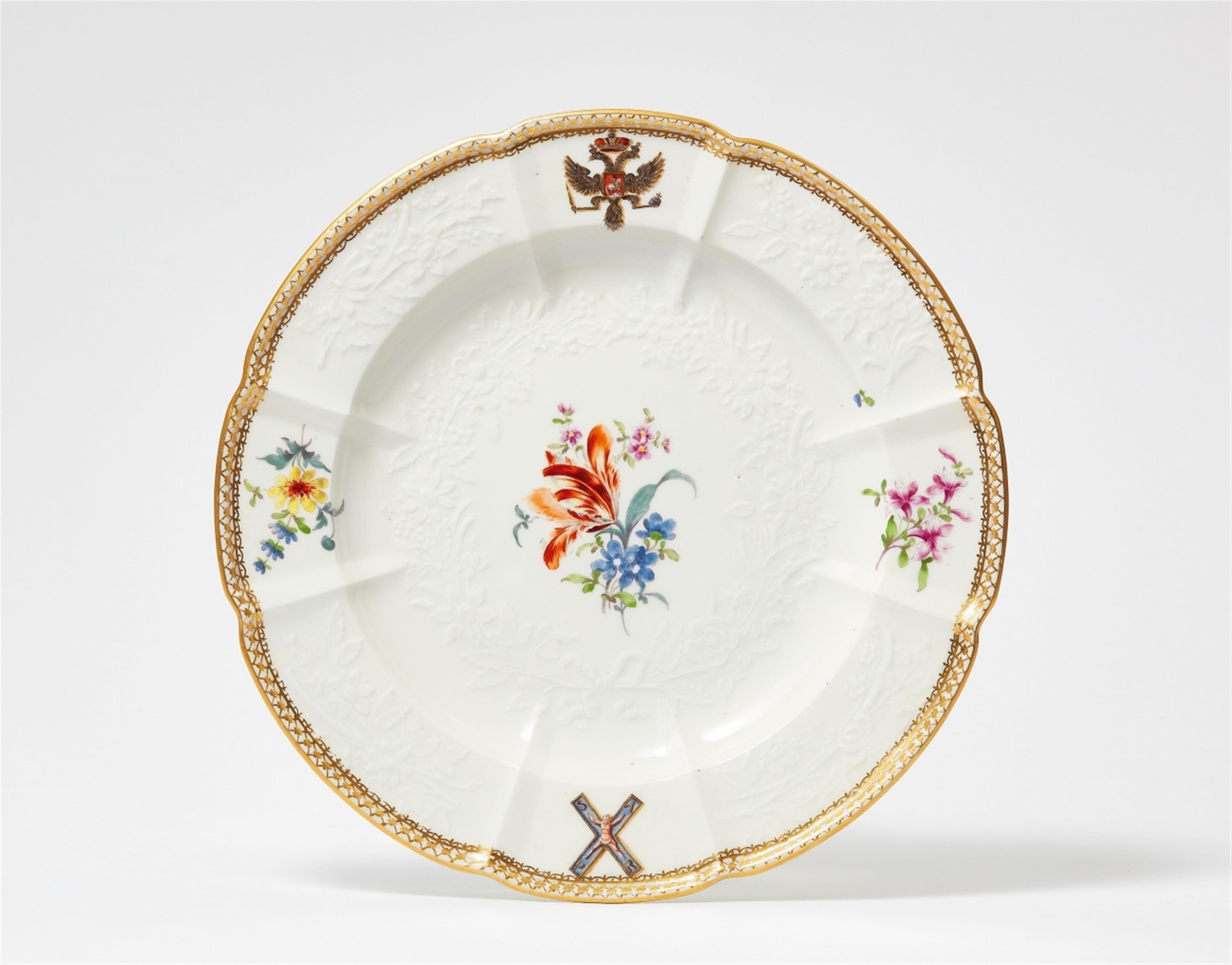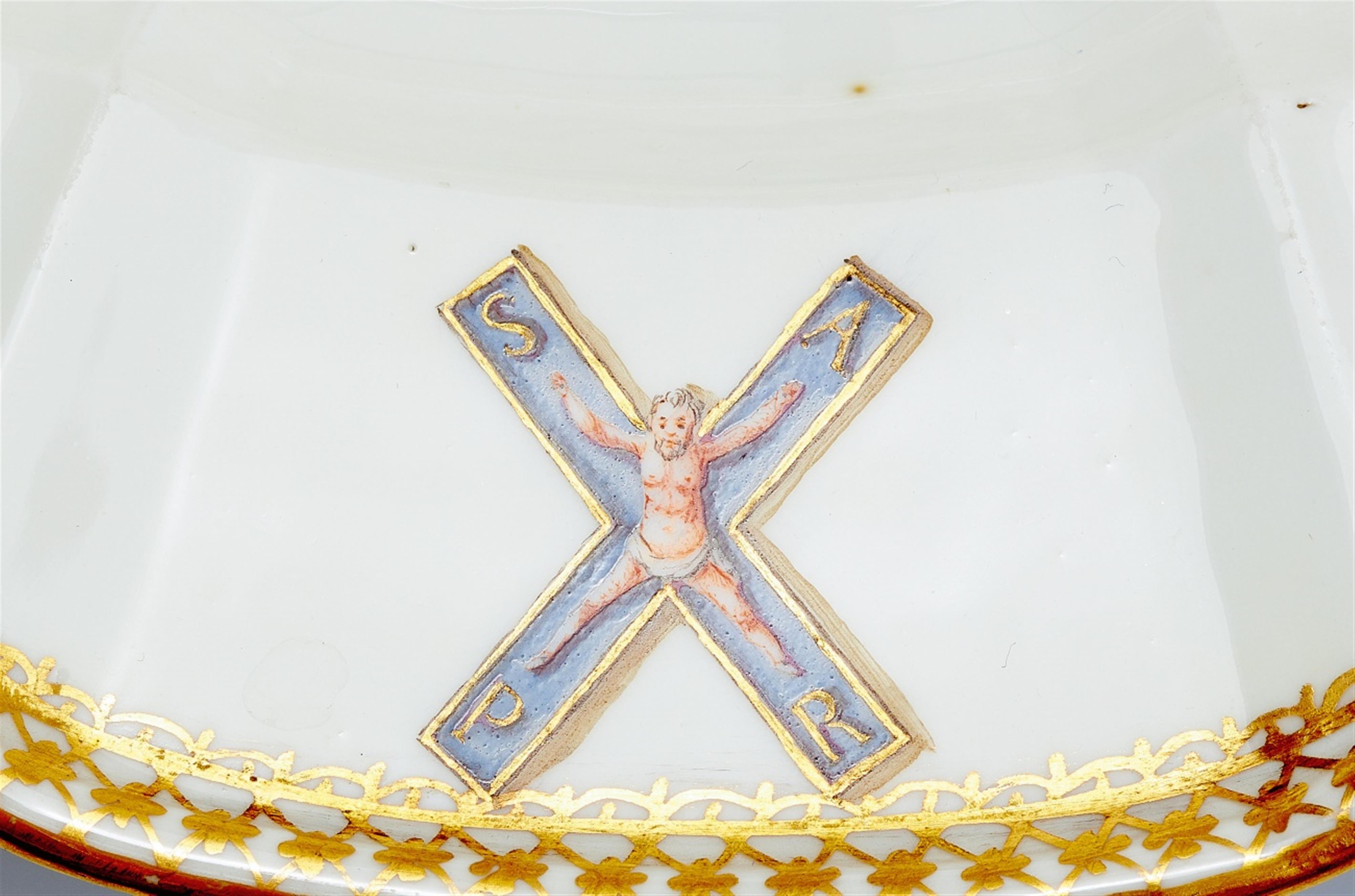A Meissen porcelain plate from a later order for the St. Andrew's service
Gotzkowsky model. The rim painted with the double headed eagle of imperial Russia beneath St. Andrew's cross and flanked by two flowering sprigs. The well with a bouquet of tulips, violets and forget me nots. Blue crossed swords mark with dot, dreher's number 10, inventory number of the State Hermitage in St. Petersburg in red lacquer. D 24.7 cm.
Circa 1777, model by Johann Friedrich Eberlein.
In 1744, the Russian Tsarina Elisabeth I was presented with what is thought to be the most extensive service ever produced by the manufactory as a symbol of the strengthening of the Saxon-Russian alliance. Since the porcelain, known as the St. Andrew's service, was used for the dessert course at the yearly banquets of the Order of St. Andrew, several subsequent orders had to be made. These subsequent orders, carried out by both the Meissen and St. Petersburg manufactories througout the 18th century and even after the abolition of the feast of St. Andrew in 1801, are well known and published. These later additions to the original service from 1744 can be recognised due to the replacement of woodcut style flowers with simple, naturalistically painted blooms.
Provenance
Former imperial collections, St. Petersburg, State Hermitage.
In the Tono Dreßen collection in Münster since 1984.
Literature
For more on this service, cf.: Pietsch ed., Meißen für die Zaren. Porzellan als Mittel sächsisch-russischer Politik im 18. Jh., Munich 2004, p. 66 ff.




